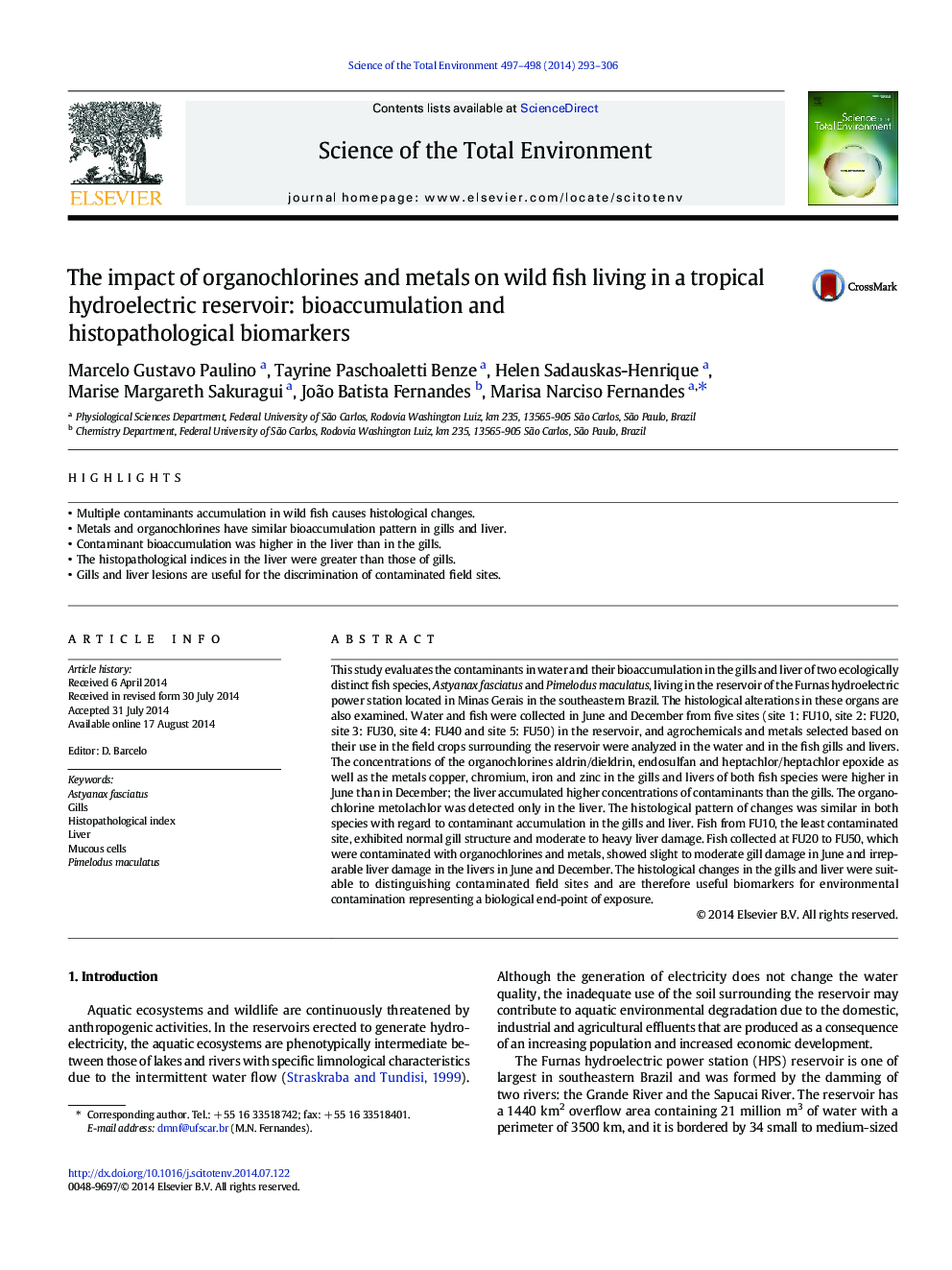| کد مقاله | کد نشریه | سال انتشار | مقاله انگلیسی | نسخه تمام متن |
|---|---|---|---|---|
| 6328678 | 1619775 | 2014 | 14 صفحه PDF | دانلود رایگان |
- Multiple contaminants accumulation in wild fish causes histological changes.
- Metals and organochlorines have similar bioaccumulation pattern in gills and liver.
- Contaminant bioaccumulation was higher in the liver than in the gills.
- The histopathological indices in the liver were greater than those of gills.
- Gills and liver lesions are useful for the discrimination of contaminated field sites.
This study evaluates the contaminants in water and their bioaccumulation in the gills and liver of two ecologically distinct fish species, Astyanax fasciatus and Pimelodus maculatus, living in the reservoir of the Furnas hydroelectric power station located in Minas Gerais in the southeastern Brazil. The histological alterations in these organs are also examined. Water and fish were collected in June and December from five sites (site 1: FU10, site 2: FU20, site 3: FU30, site 4: FU40 and site 5: FU50) in the reservoir, and agrochemicals and metals selected based on their use in the field crops surrounding the reservoir were analyzed in the water and in the fish gills and livers. The concentrations of the organochlorines aldrin/dieldrin, endosulfan and heptachlor/heptachlor epoxide as well as the metals copper, chromium, iron and zinc in the gills and livers of both fish species were higher in June than in December; the liver accumulated higher concentrations of contaminants than the gills. The organochlorine metolachlor was detected only in the liver. The histological pattern of changes was similar in both species with regard to contaminant accumulation in the gills and liver. Fish from FU10, the least contaminated site, exhibited normal gill structure and moderate to heavy liver damage. Fish collected at FU20 to FU50, which were contaminated with organochlorines and metals, showed slight to moderate gill damage in June and irreparable liver damage in the livers in June and December. The histological changes in the gills and liver were suitable to distinguishing contaminated field sites and are therefore useful biomarkers for environmental contamination representing a biological end-point of exposure.
Journal: Science of The Total Environment - Volumes 497â498, 1 November 2014, Pages 293-306
